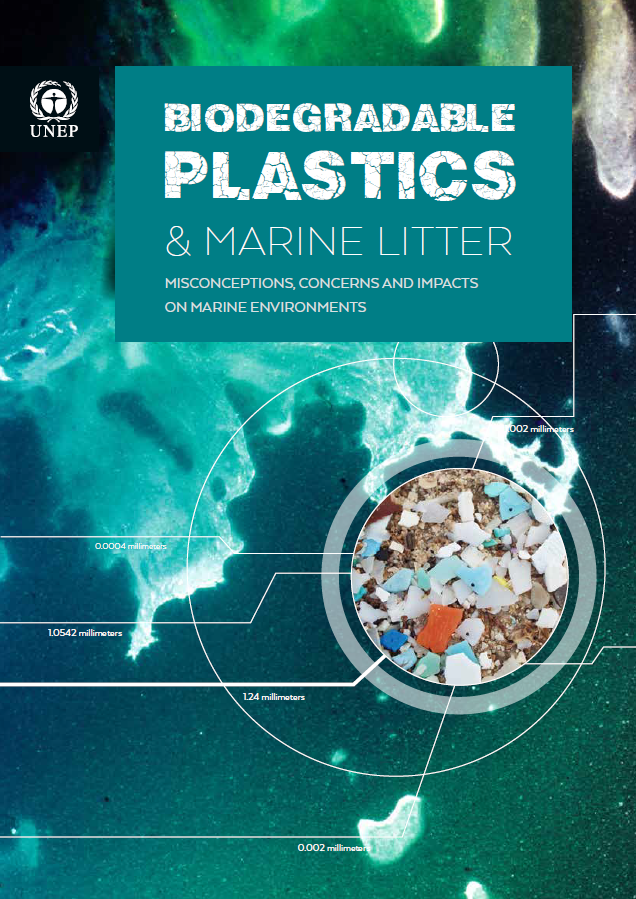Executive Summary
The development and use of synthetic polymers, and plastics has conferred widespread benefits on society. One of the most notable properties of these materials is their durability which, combined with their accidental loss, deliberate release and poor waste management has resulted in the ubiquitous presence of plastic in oceans. As most plastics in common use are very resistant to biodegradation, the quantity of plastic in the ocean is increasing, together with the risk of significant physical or chemical impacts on the marine environment. The nature of the risk will depend on: the size and physical characteristics of the objects; the chemical composition of the polymer; and, the time taken for complete biodegradation to occur (GESAMP 2015).
Synthetic polymers can be manufactured from fossil fuels or recently-grown biomass. Both sources can be used to produce either non-biodegradable or biodegradable plastics. Many plastics will weather and fragment in response to UV radiation – a process that can be slowed down by the inclusion of specific additives. Complete biodegradation of plastic occurs when none of the original polymer remains, a process involving microbial action; i.e. it has been broken down to carbon dioxide, methane and water. The process 1.002 millimeters is temperature dependent and some plastics labelled as ‘biodegradable’ require the conditions that typically occur in industrial compositing units, with prolonged temperatures of above 50°C, to be completely broken down. Such conditions are rarely if ever met in the marine environment.
Some common non-biodegradable polymers, such as polyethylene, are manufactured with a metal-based additive that results in more rapid fragmentation (oxo-degradable). This will increase the rate of microplastic formation but there is a lack of independent scientific evidence that biodegradation will occur any more rapidly than unmodified polyethylene. Other more specialised polymers will break down more readily in
0.0004seawater, and they may have useful applications, for example, to reduce the impact of lost or discarded fishing millimeters gear. However, there is the potential that such polymers may compromise the operational requirement of the product. In addition, they are much more expensive to produce and financial incentives may be required to encourage uptake.
A further disadvantage of the more widespread adoption of ‘biodegradable’ plastics is the need to separate
1.0542 millimetersthem from the non-biodegradable waste streams for plastic recycling to avoid compromising the quality of the final product. In addition, there is some albeit limited evidence to suggest that labelling a product as ‘biodegradable’ will result in a greater inclination to litter on the part of the public (GESAMP 2015).
In conclusion, the adoption of plastic products labelled as ‘biodegradable’ will not bring about a significant decrease either in the quantity of plastic entering the ocean or the risk of physical and chemical impacts on 1.24 millimeters the marine environment, on the balance of current scientific evidence.
Copyright (C) United Nations Environment Programme (UNEP), 2015

